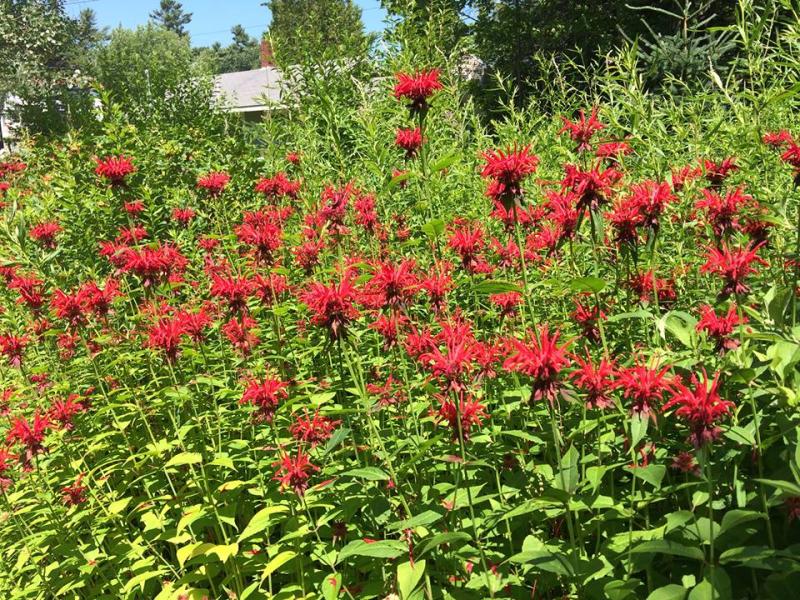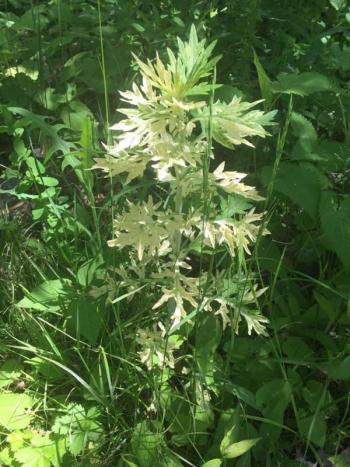Human use of herbs, flowers and other plants for their curative powers goes back centuries. In some cultures, shamans and wise women used them to treat a variety of complaints. How long? According to takingcharge.csh.umn.edu, the Egyptian Ebers Papyrus dates back to 1500 B.C. and, in India, the Charaka Samhita documented the uses of more than 300 medicinal plants in 700 B.C.
In “Understanding Folk Medicine” Bonnie O’Connor and David Hufford note the connection between pagan European pagan practices and beliefs with the folk healing. That connection included “an interconnectedness of body, mind, and spirit; elements of the mystical or supernatural; treatment of illnesses using ritual baths, cleansings, or offerings; a presumption of the highest goodness of nature; the recitation of spoken or written charms or prayers; and being born with a special mystical ability to heal.”
Here are some of the most popular herbs and flowers and some uses, many of them readily available in tablet form locally at Nathan’s Pharmacy here in Boothbay Harbor and Rising Tide in Damariscotta, where they are sold in their natural state for cooking and whatnot.
Mana Medicinals (carried at Nathan’s) is based here in the Harbor on West Street. All the herbal medications are grown by owner Anna Christina, who is a great source for more detailed information about uses and, importantly, doses.
Check with your primary care doctor about any possible interactions herbal remedies may have with any medications you may be taking. For example, someone on antidepressants should avoid using St. John’s Wort. Not only could the herb lessen the effectiveness of the medication(s), the combination of St. John’s wort and some antidepressants can lead to life-threatening increase of serotonin, according to the National Center for Complementary and Integrative Health. If you are not taking antidepressants for depression, St. John’s may be worth considering. Again, talk it over with your primary care doctor.
Commonly used herbs and flowers that can be administered (and enjoyed) in teas, and this is a most partial list, include: Echinacea (for cold symptoms); chamomile for relaxation, stress and anxiety (urmc.rochester.edu); lavender to lower blood pressure and heart rate, and it has a calming effect as well (naturalmedicinejournal.com) – even having a small bottle of lavender oil to inhale can bring you into a more relaxed state; sew the flowers into a cloth bag to place under your pillow (http://ww.indigo-herbs.co.uk/); black cohosh for relief of menopause symptoms (altnature.com); mugwort tea (Artemesia vulgaris) is an immune health booster – with a variety of vitamins promoting immune health, the elimination of free radicals, and production of more white blood cells. It has magical properties as well, but that is a topic for a different article! Many herbal tea companies, including Buddha Teas, offer bags of mugwort tea (vinmec.com). Cinquefoil for cough and sore throat; ashwagandha – supports immune and brain function; supports mental health; helps with getting a deep, restorative sleep and more; comfrey – contains allatoin, present in cell growth, which aids in its healing properties. Magically speaking, it’s used in money, safe travel, endurance and stability spells; bee balm – infusion of flowers (or leaves) can help ease abdominal pains, indigestion, fevers, sore throats, colds (bodhibasics.com).
Best not to drink in tea form, but a well-known healing agent: Aloe, used since Egyptian times, heals wounds and sunburn, burns and has anti-inflammatory properties. Magical uses include protection and luck.
There are numerous websites offering seeds so you can grow your own herbs.
Here are a few tried and true uses for items in your pantry or fridge you may know and have used:
Cooled tea bags – help puffy, swollen and red eyes. Thank the caffeine in the tea for that: It helps to shrink the eye’s blood vessels. Just boil the tea bags, squeeze out the tea, put the bags in the fridge to chill for a bit then place one on each eye – yes, closed eyes.
Ginger – nausea, overeating/too full feeling. It works by blocking serotonin receptors in the gut that cause nausea. And it may also promote the release of enzymes that aid in breaking down food. Both the organic teas or freshly grated ginger begin to work within 30 minutes. It’s the perfect go-to for after those big holiday meals!
Salt – relieves sore throat pain and irritation. The saline coats the throat and mouth and can loosen mucus and ease inflamation. Mix 1 tsp salt in 8 ounces of tepid to cool water, gargle. Repeat every few hours.
Cabbage leaves – used by new mothers who choose not to breastfeed their baby. The raw leaves are wrapped around each breast to reduce and eventually stop the production of milk.
Honey – an anti-inflammatory, antibacterial and antioxidant. Did you know there are more than 320 varieties of honey? To lessen a cough, one spoonful is recommended. The Mayo Clinic notes medical grade honey has been effective in healing burns; studies have indicated it may have antidepressant, anticonvulsant and anti-anxiety benefits. And in some studies, honey has been found to help prevent memory disorders.
Chicken soup – A study published in Chest in 2000 showed the soup might have anti-inflammatory effects, as backed up by another study in 2012. Colby Teeman, dietician and assistant professor of dietetics and nutrition at the University of Dayton, wrote in an article appearing on the FORTUNE Well website last last year about how chicken soup works its healing magic: Chicken provides the protein needed to fight infection, the veggies add vitamins, minerals and antioxidants, and the noodles (apparently used in the American version of this soup) provide highly digestible carbohydrates for energy and healing. Plus, the aroma, warmth and flavor of chicken soup is like an internal blanket providing a feeling of well being and of being cared for.
The website https://altnature.com has gorgeous photos of the herbs and flowers included in this article and more.
Other sources not named within the article: The Healthy website; statnews.com, bodhibasics.com, ACORN School of Herbal Medicine.





































.png)

.png)
